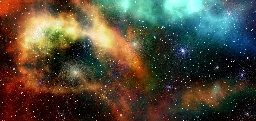New research puts age of universe at 26.7 billion years, nearly twice as old as previously believed
New research puts age of universe at 26.7 billion years, nearly twice as old as previously believed
Assassin's Creed haptic shirt will make you feel 'exclusive sensations never felt before' | Engadget
Ripple's open market sales of XRP cryptocurrency aren't securities, court rules in landmark decision










The "cosmological constant," Is also known as the Hubble constant, it refers to the rate of expansion in the universe. By knowing the speed of expansion it would be possible to "Rewind" the universe (like a video) to get an estimation of the universes age. I believe the authors are suggesting that dark energy has a bigger effect on the red shift than previously estimated.
As for Dark energy....
That is a topic of much discussion, there is "Dark Matter" and "Dark Energy" that we know about, thanks to Einstein. When they refer to either it's safe to say that the don't fully understand what they are only that they are. Personally I believe that Dark matter is just a particle that has yet to be discovered, and that Dark energy is a result of that particles interaction with matter.